
How to Use ESP32 (30 pin): Examples, Pinouts, and Specs
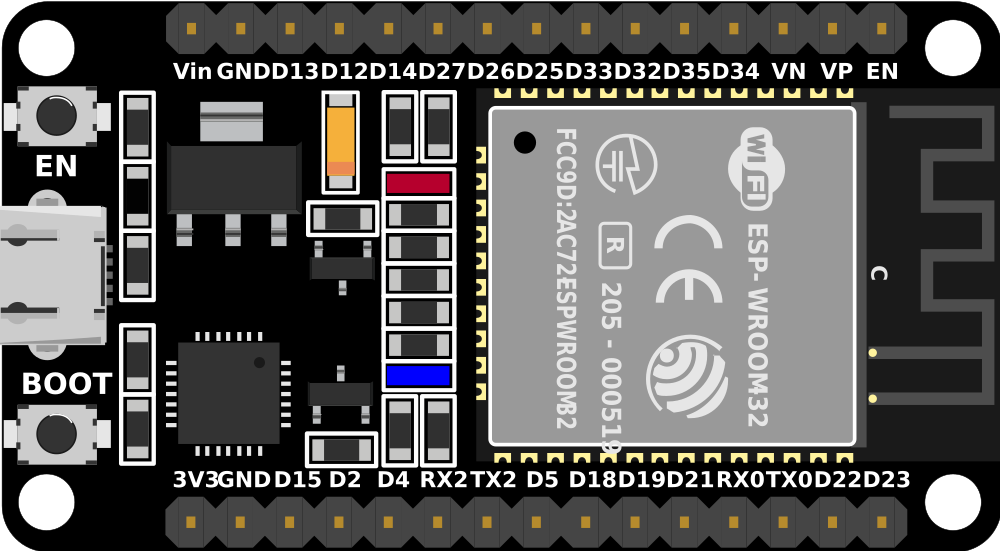
 Design with ESP32 (30 pin) in Cirkit Designer
Design with ESP32 (30 pin) in Cirkit DesignerIntroduction
The ESP32 (30 pin) is a powerful microcontroller designed for IoT and embedded system applications. It features built-in Wi-Fi and Bluetooth capabilities, making it an excellent choice for projects requiring wireless communication. With its 30 GPIO pins, the ESP32 offers a wide range of input/output functionalities, including ADC, DAC, PWM, I2C, SPI, UART, and more. Its versatility and high performance make it a popular choice among hobbyists and professionals alike.
Explore Projects Built with ESP32 (30 pin)
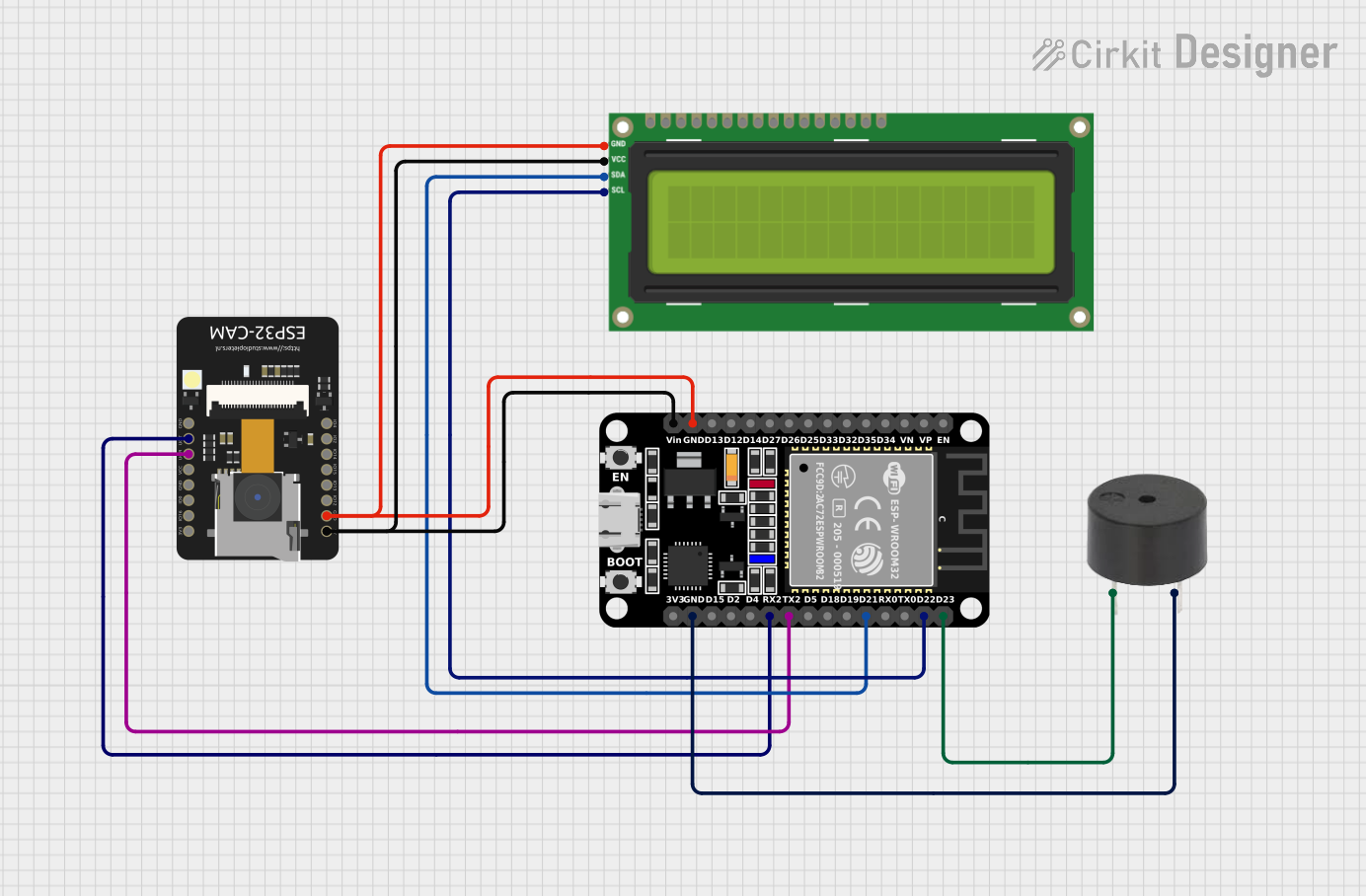
 Open Project in Cirkit Designer
Open Project in Cirkit Designer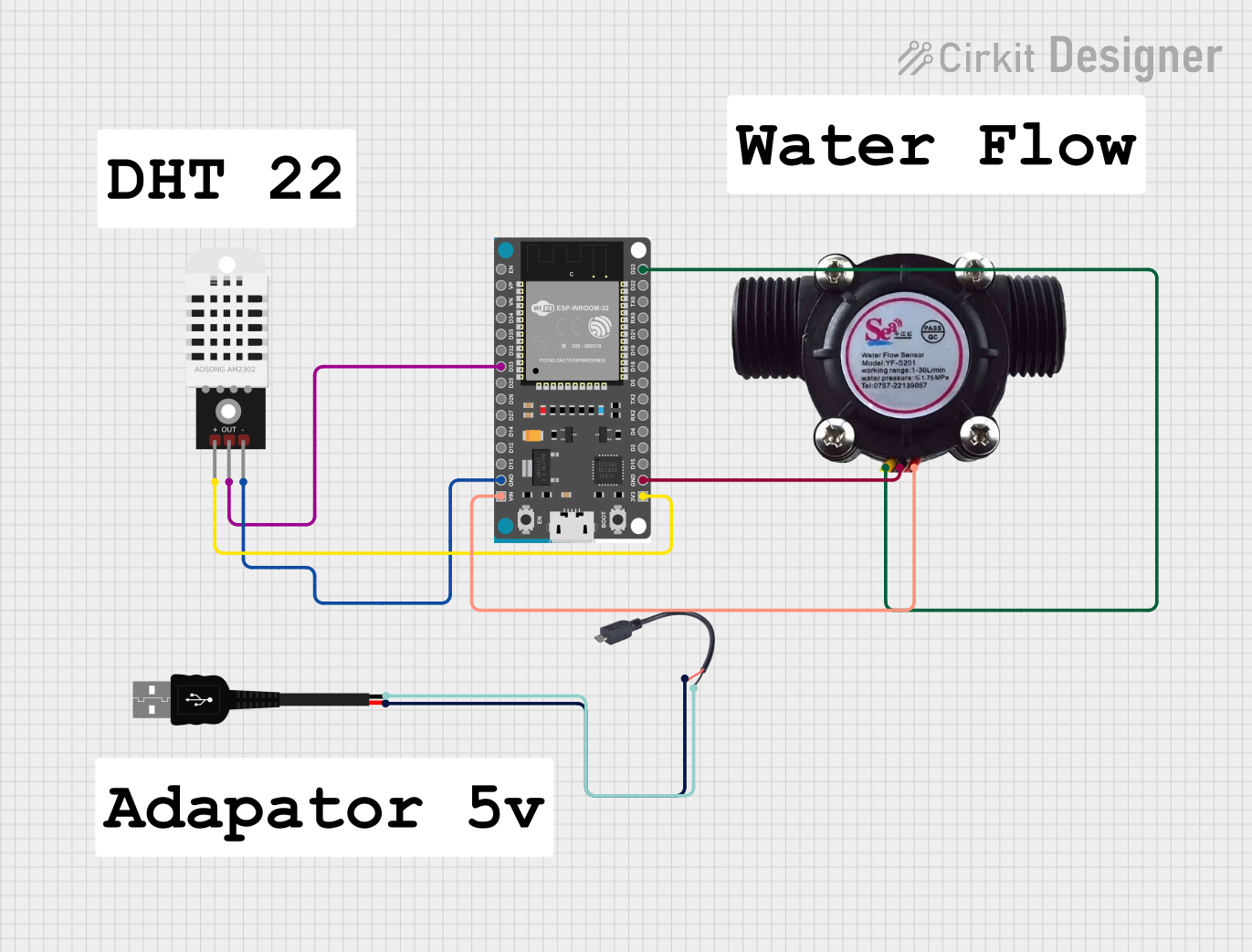
 Open Project in Cirkit Designer
Open Project in Cirkit Designer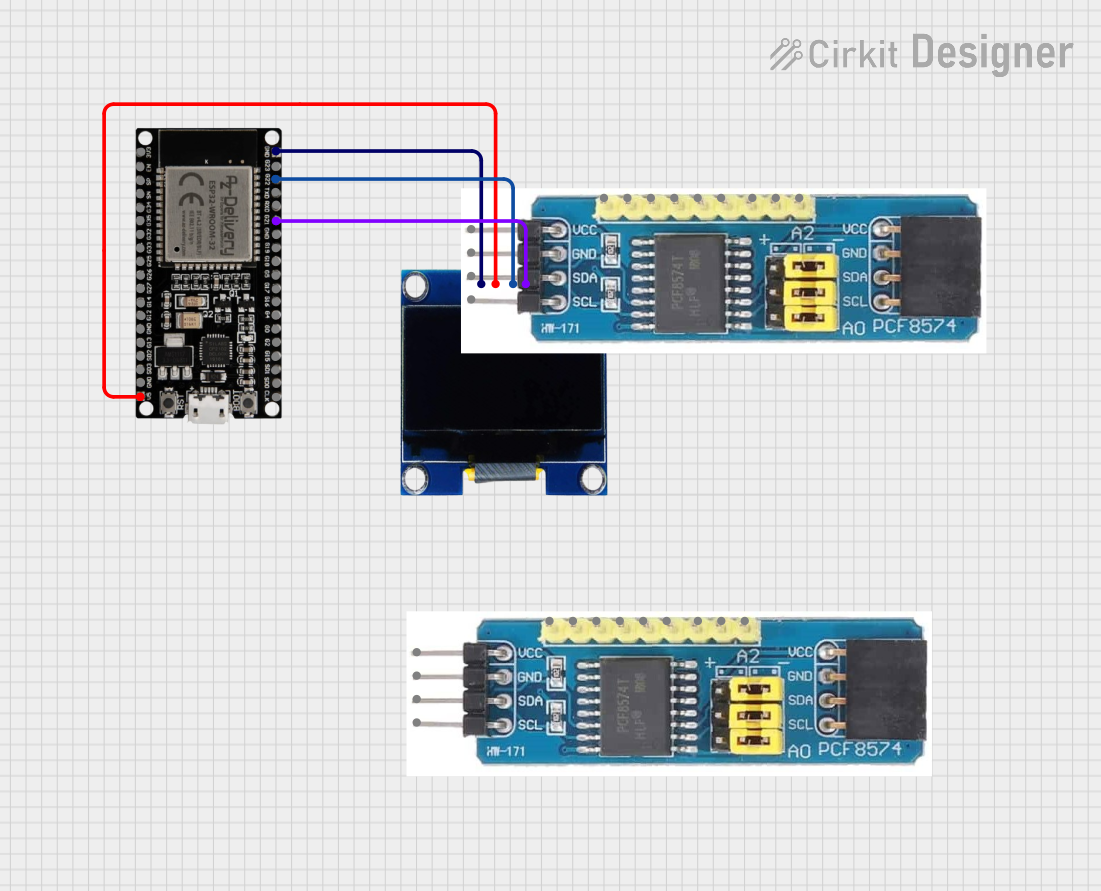
 Open Project in Cirkit Designer
Open Project in Cirkit Designer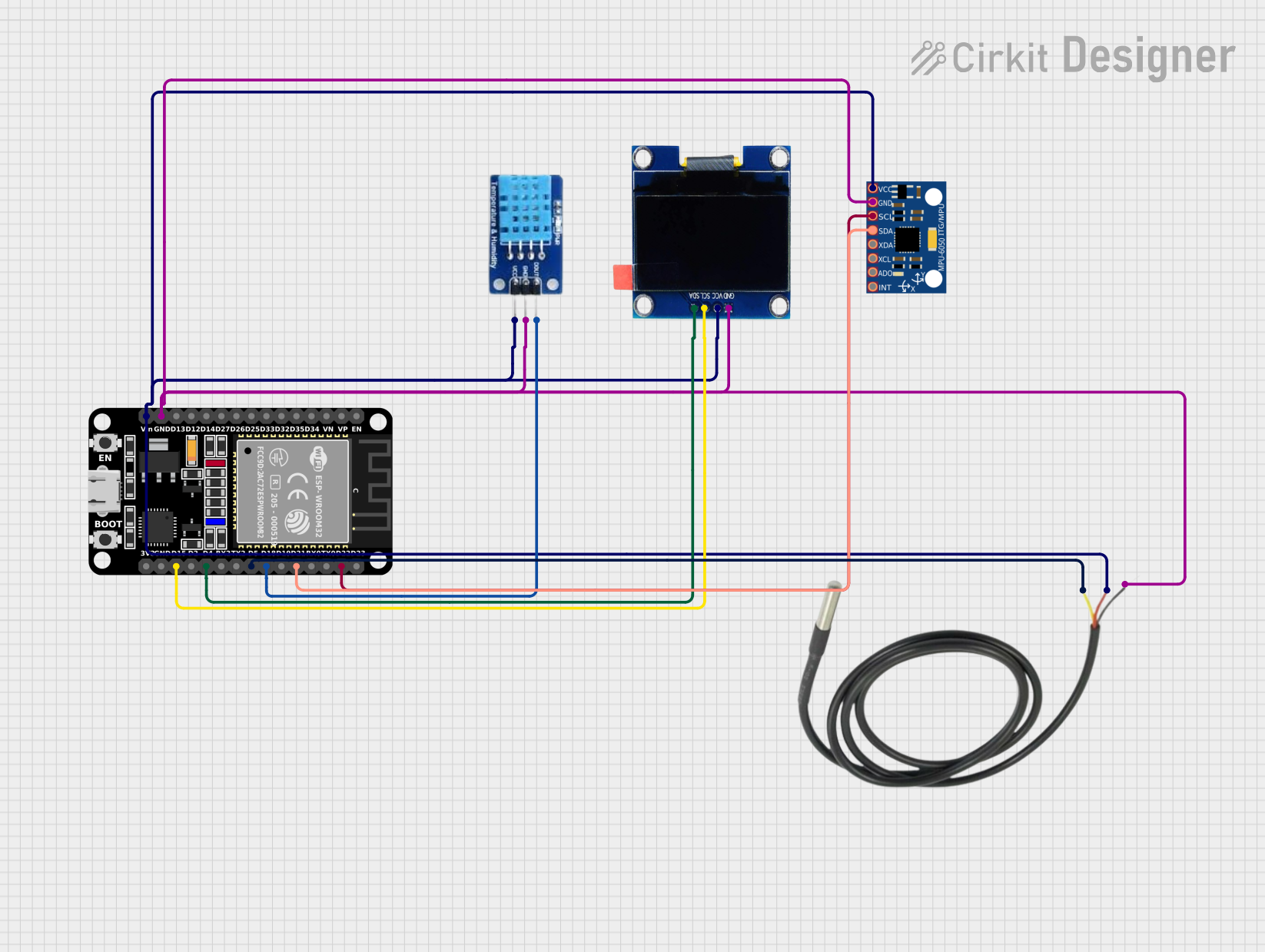
 Open Project in Cirkit Designer
Open Project in Cirkit DesignerExplore Projects Built with ESP32 (30 pin)

 Open Project in Cirkit Designer
Open Project in Cirkit Designer
 Open Project in Cirkit Designer
Open Project in Cirkit Designer
 Open Project in Cirkit Designer
Open Project in Cirkit Designer
 Open Project in Cirkit Designer
Open Project in Cirkit DesignerCommon Applications
- Internet of Things (IoT) devices
- Home automation systems
- Wireless sensor networks
- Wearable technology
- Robotics and automation
- Data logging and monitoring systems
Technical Specifications
Key Technical Details
- Microcontroller: Tensilica Xtensa LX6 dual-core (or single-core) processor
- Clock Speed: Up to 240 MHz
- Flash Memory: 4 MB (varies by model)
- SRAM: 520 KB
- Wi-Fi: 802.11 b/g/n
- Bluetooth: v4.2 BR/EDR and BLE
- Operating Voltage: 3.3V
- Input Voltage Range: 5V (via USB) or 7-12V (via VIN pin)
- GPIO Pins: 30 pins (multipurpose)
- ADC Channels: 18 (12-bit resolution)
- DAC Channels: 2 (8-bit resolution)
- PWM Channels: 16
- Communication Protocols: UART, SPI, I2C, I2S, CAN
- Power Consumption: Ultra-low power consumption in deep sleep mode (~10 µA)
Pin Configuration and Descriptions
The ESP32 (30 pin) has a total of 30 GPIO pins, each with specific functions. Below is a table summarizing the key pins and their descriptions:
| Pin Name | Function | Description |
|---|---|---|
| VIN | Power Input | Input voltage (7-12V) for powering the ESP32. |
| 3V3 | Power Output | Provides 3.3V output for external components. |
| GND | Ground | Ground connection. |
| EN | Enable | Enables or disables the chip (active high). |
| IO0 | GPIO0 / Boot Mode | Used for boot mode selection or general-purpose I/O. |
| IO2 | GPIO2 | General-purpose I/O, often used for onboard LED. |
| IO4 | GPIO4 | General-purpose I/O. |
| IO5 | GPIO5 | General-purpose I/O. |
| IO12 | GPIO12 / ADC2_CH5 | General-purpose I/O or ADC channel. |
| IO13 | GPIO13 / ADC2_CH4 | General-purpose I/O or ADC channel. |
| IO14 | GPIO14 / ADC2_CH6 / HSPI_CLK | General-purpose I/O, ADC, or SPI clock. |
| IO15 | GPIO15 / ADC2_CH3 / HSPI_CS | General-purpose I/O, ADC, or SPI chip select. |
| IO16 | GPIO16 | General-purpose I/O. |
| IO17 | GPIO17 | General-purpose I/O. |
| IO18 | GPIO18 / VSPI_CLK | General-purpose I/O or SPI clock. |
| IO19 | GPIO19 / VSPI_MISO | General-purpose I/O or SPI MISO. |
| IO21 | GPIO21 / I2C SDA | General-purpose I/O or I2C data line. |
| IO22 | GPIO22 / I2C SCL | General-purpose I/O or I2C clock line. |
| IO23 | GPIO23 / VSPI_MOSI | General-purpose I/O or SPI MOSI. |
| IO25 | GPIO25 / DAC1 / ADC2_CH8 | General-purpose I/O, DAC, or ADC channel. |
| IO26 | GPIO26 / DAC2 / ADC2_CH9 | General-purpose I/O, DAC, or ADC channel. |
| IO27 | GPIO27 / ADC2_CH7 | General-purpose I/O or ADC channel. |
| IO32 | GPIO32 / ADC1_CH4 / Touch9 | General-purpose I/O, ADC, or touch sensor. |
| IO33 | GPIO33 / ADC1_CH5 / Touch8 | General-purpose I/O, ADC, or touch sensor. |
| IO34 | GPIO34 / ADC1_CH6 | Input-only pin, used for ADC. |
| IO35 | GPIO35 / ADC1_CH7 | Input-only pin, used for ADC. |
Usage Instructions
How to Use the ESP32 in a Circuit
Powering the ESP32:
- Use the VIN pin to supply 7-12V, or connect a 5V USB cable to the micro-USB port.
- Ensure the 3.3V pin is used only for low-power external components.
Connecting Peripherals:
- Use GPIO pins for digital input/output.
- For analog input, connect sensors to ADC pins (e.g., GPIO34, GPIO35).
- For communication, use I2C (GPIO21, GPIO22), SPI (GPIO18, GPIO19, GPIO23), or UART (GPIO1, GPIO3).
Programming the ESP32:
- Install the ESP32 board package in the Arduino IDE.
- Connect the ESP32 to your computer via USB.
- Select the correct board and port in the Arduino IDE.
- Write and upload your code.
Example Code: Blinking an LED
The following example demonstrates how to blink an LED connected to GPIO2:
// Define the GPIO pin for the LED
#define LED_PIN 2
void setup() {
pinMode(LED_PIN, OUTPUT); // Set GPIO2 as an output pin
}
void loop() {
digitalWrite(LED_PIN, HIGH); // Turn the LED on
delay(1000); // Wait for 1 second
digitalWrite(LED_PIN, LOW); // Turn the LED off
delay(1000); // Wait for 1 second
}
Important Considerations
- Voltage Levels: The ESP32 operates at 3.3V logic levels. Avoid connecting 5V signals directly to GPIO pins.
- Boot Mode: GPIO0 must be pulled low during boot to enter programming mode.
- Power Supply: Ensure a stable power supply to avoid unexpected resets or malfunctions.
Troubleshooting and FAQs
Common Issues and Solutions
ESP32 Not Detected by Computer:
- Ensure the correct USB driver is installed (e.g., CP2102 or CH340).
- Check the USB cable for data transfer capability.
Upload Fails with "Failed to Connect" Error:
- Hold the BOOT button while uploading the code.
- Ensure GPIO0 is pulled low during programming.
Wi-Fi Connection Issues:
- Verify the SSID and password in your code.
- Check for interference or weak signal strength.
Random Resets or Instability:
- Use a stable power source with sufficient current (at least 500mA).
- Add capacitors to smooth out voltage fluctuations.
FAQs
Q: Can the ESP32 handle 5V input on GPIO pins?
A: No, the ESP32 operates at 3.3V logic levels. Use a level shifter for 5V signals.
Q: How do I use the ESP32's Bluetooth functionality?
A: The ESP32 supports both Bluetooth Classic and BLE. Use the BluetoothSerial or BLE libraries in the Arduino IDE to implement Bluetooth features.
Q: What is the maximum current the 3.3V pin can supply?
A: The 3.3V pin can supply up to 500mA, depending on the input power source.
Q: Can I use the ESP32 for battery-powered projects?
A: Yes, the ESP32 supports low-power modes, making it suitable for battery-powered applications. Use deep sleep mode to minimize power consumption.